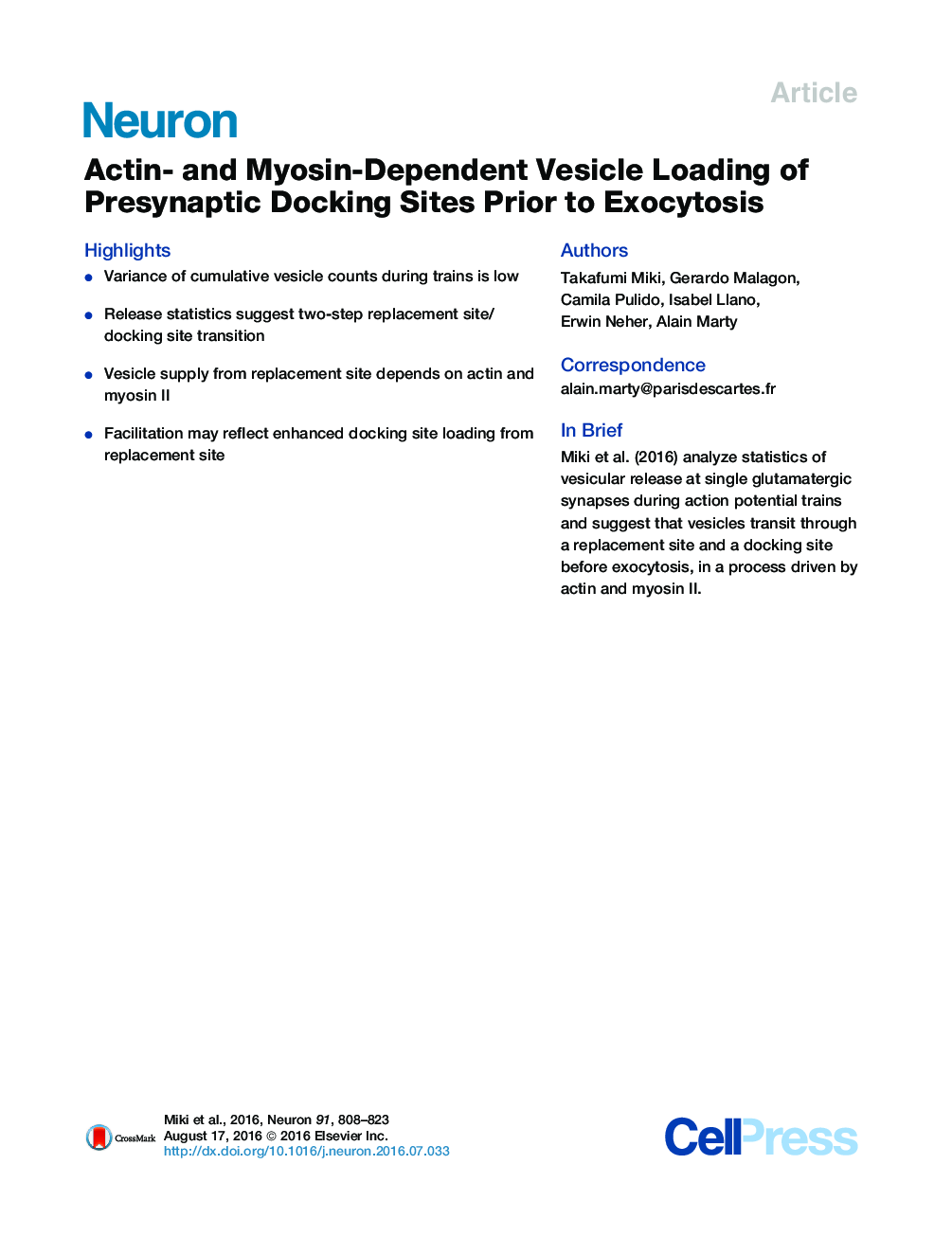| Article ID | Journal | Published Year | Pages | File Type |
|---|---|---|---|---|
| 4320660 | Neuron | 2016 | 16 Pages |
•Variance of cumulative vesicle counts during trains is low•Release statistics suggest two-step replacement site/docking site transition•Vesicle supply from replacement site depends on actin and myosin II•Facilitation may reflect enhanced docking site loading from replacement site
SummaryVariance analysis of postsynaptic current amplitudes suggests the presence of distinct docking sites (also called release sites) where vesicles pause before exocytosis. Docked vesicles participate in the readily releasable pool (RRP), but the relation between docking site number and RRP size remains unclear. It is also unclear whether all vesicles of the RRP are equally release competent, and what cellular mechanisms underlie RRP renewal. We address here these questions at single glutamatergic synapses, counting released vesicles using deconvolution. We find a remarkably low variance of cumulative vesicle counts during action potential trains. This, combined with Monte Carlo simulations, indicates that vesicles transit through two successive states before exocytosis, so that the RRP is up to 2-fold higher than the docking site number. The transition to the second state has a very rapid rate constant, and is specifically inhibited by latrunculin B and blebbistatin, suggesting the involvement of actin and myosin.
